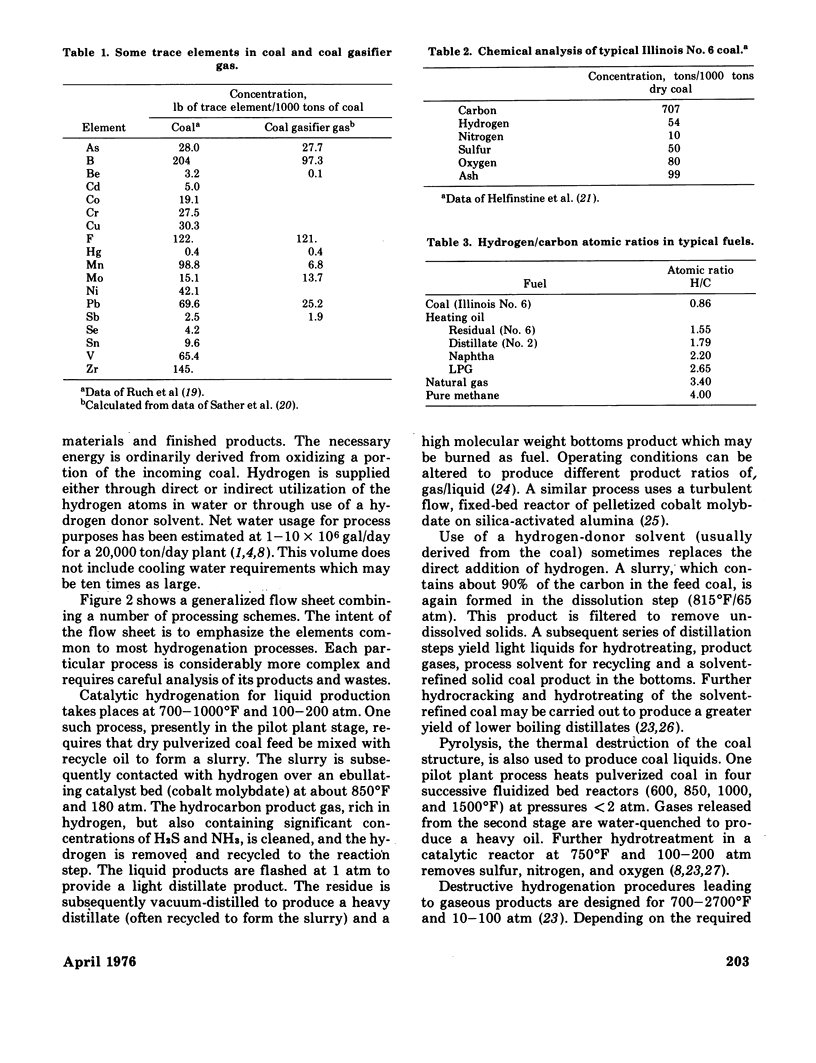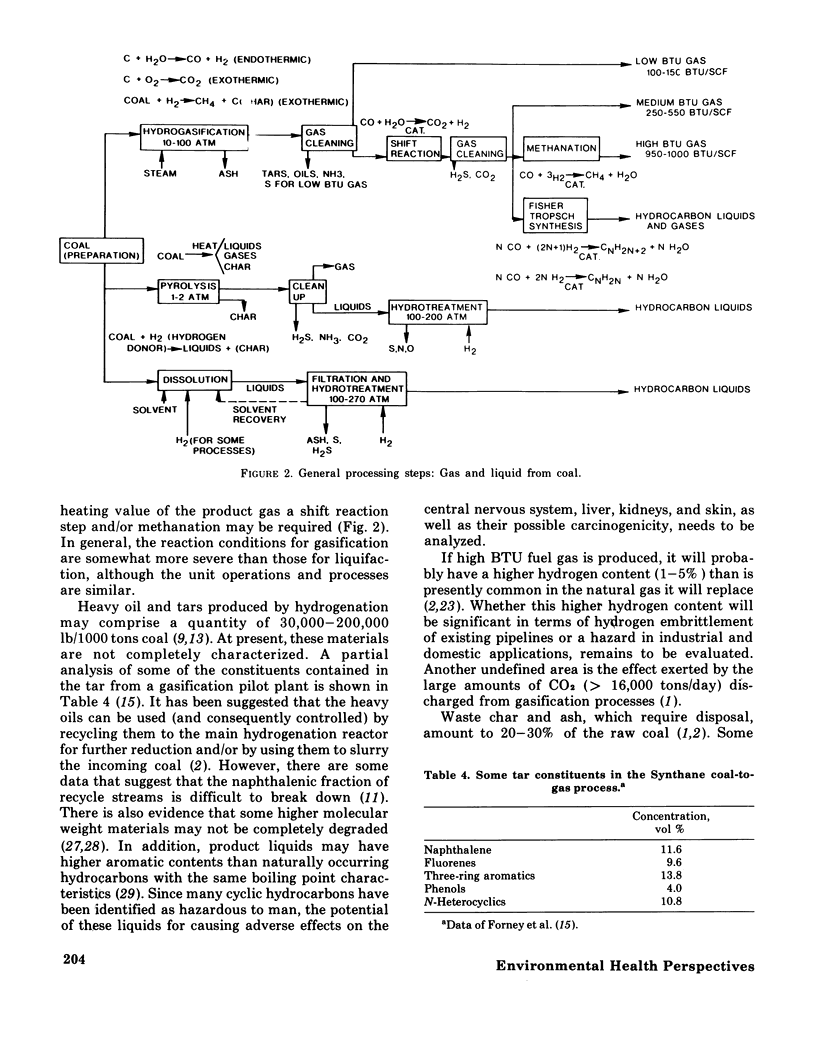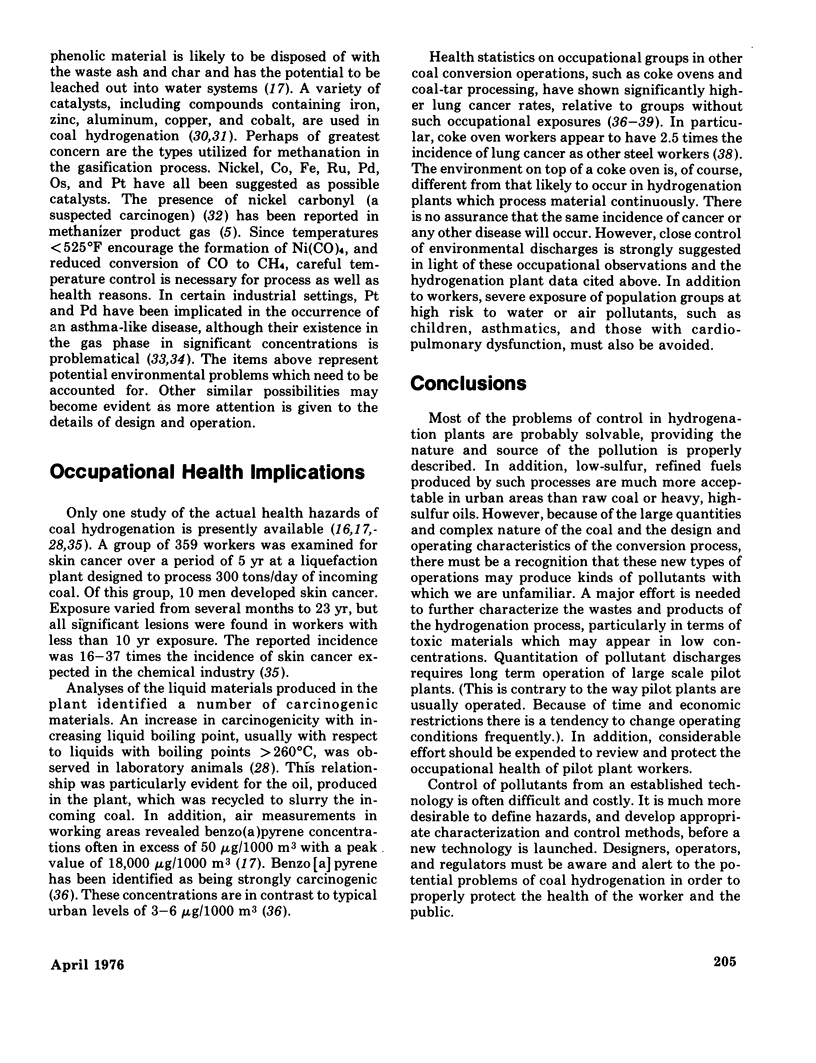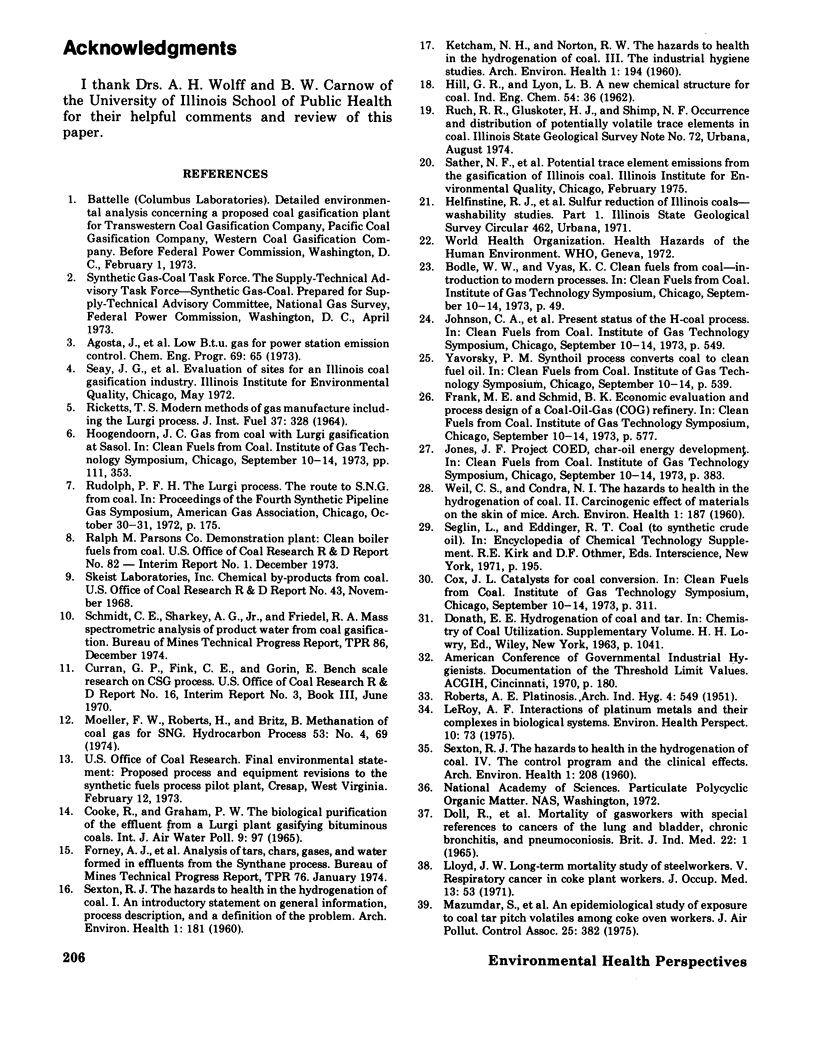Abstract
Planning of coal hydrogenation processes, such as liquifaction and gasification, requires consideration of public health implications. Commercial plants will require coal quantities greater than or equal to 20,000 tons/day and the large size of these plants calls for careful consideration of the potential health hazards from the wastes and products of such processes. Analysis of pollution potential can roughly be divided into three categories: raw material structure and constituents, process design, and mode of plant operation. Identifiable pollutants include hydrogen cyanide, phenols, cresols, carbonyl and hydrogen sulfides, ammonia, mercaptans, thiocyanides, aniline, arsenic, trace metals and various polycyclic hydrocarbons. One study of workers in a hydrogenation process has revealed an incidence of skin cancer 16-37 times that expected in the chemical industry. In addition, a number of high boiling point liquid products were identified as being carcinogenic, and air concentrations of benzo[a]pyrene up to 18,000 mug/1000 m3 were reported. Health statistics on occupational groups in other coal conversion industries have shown significantly higher lung cancer rates, relative to groups without such occupational exposures. These data suggest that coal hydrogenation plants must be carefully planned and controlled to avoid harm to environmentally and occupationally exposed populations.
Full text
PDF





Selected References
These references are in PubMed. This may not be the complete list of references from this article.
- KETCHAM N. H., NORTON R. W. The hazards to health in the hydrogenation of coal. 3. The industrial hygiene studies. Arch Environ Health. 1960 Sep;1:194–207. doi: 10.1080/00039896.1960.10662686. [DOI] [PubMed] [Google Scholar]
- LeRoy A. F. Interactions of platinum metals and their complexes in biological systems. Environ Health Perspect. 1975 Apr;10:73–83. doi: 10.1289/ehp.751073. [DOI] [PMC free article] [PubMed] [Google Scholar]
- Lloyd J. W. Long-term mortality study of steelworkers. V. Respiratory cancer in coke plant workers. J Occup Med. 1971 Feb;13(2):53–68. [PubMed] [Google Scholar]
- ROBERTS A. E. Platinosis; a five-year study of the effects of soluble platinum salts on employees in a platinum laboratory and refinery. AMA Arch Ind Hyg Occup Med. 1951 Dec;4(6):549–559. [PubMed] [Google Scholar]
- SEXTON R. J. The hazards to health in the hydrogenation of coal. 1. An introductory statement on general information, process description, and a definition of the problem. Arch Environ Health. 1960 Sep;1:181–186. doi: 10.1080/00039896.1960.10662684. [DOI] [PubMed] [Google Scholar]
- SEXTON R. J. The hazards to health in the hydrogenation of coal. 4. The control program and the clinical effects. Arch Environ Health. 1960 Sep;1:208–231. doi: 10.1080/00039896.1960.10662687. [DOI] [PubMed] [Google Scholar]
- WEIL C. S., CONDRA N. I. The hazards to health in the hydrogenation of coal. 2. Carcinogenic effect of materials on the skin of mice. Arch Environ Health. 1960 Sep;1:187–193. doi: 10.1080/00039896.1960.10662685. [DOI] [PubMed] [Google Scholar]


